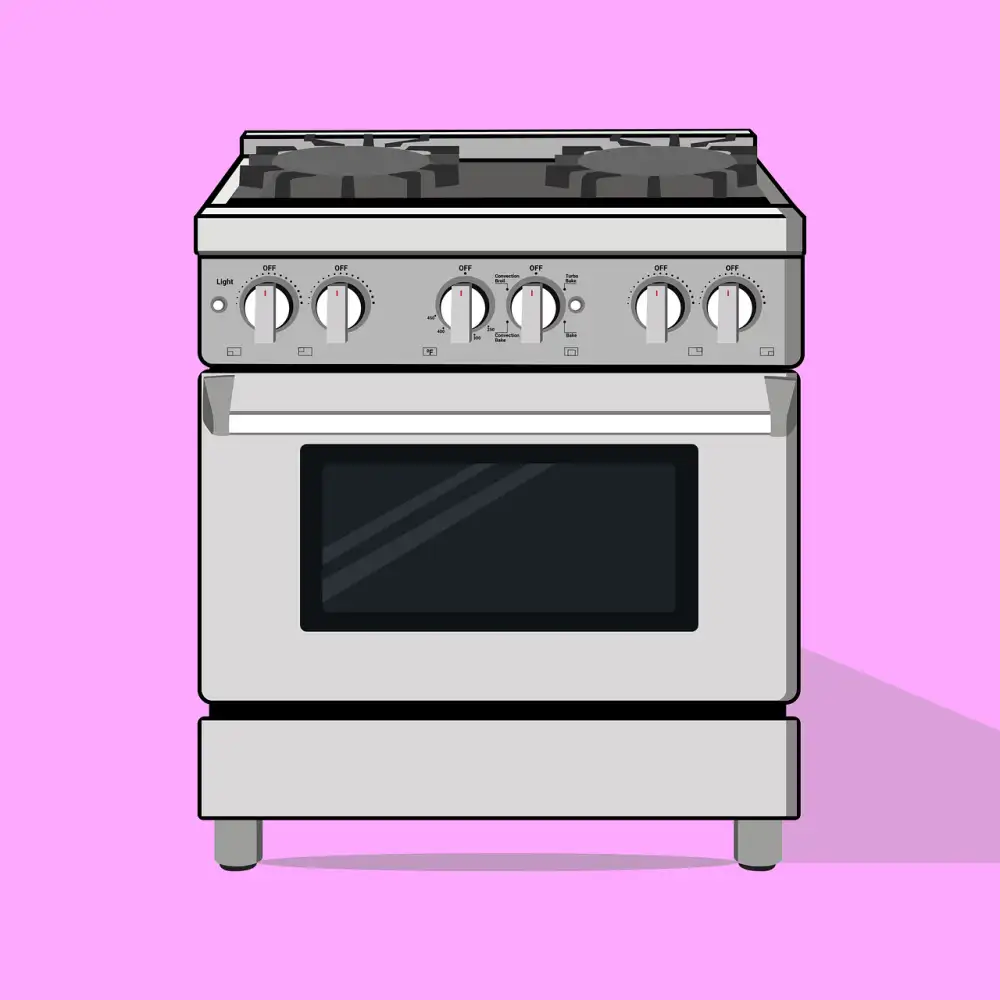Master the Art of Cooking: A Step-by-Step Guide on How to Use a Convection Oven at Home

Convection ovens have revolutionized the way we cook by providing a faster and more efficient method of heating food. Unlike traditional ovens, which rely on radiant heat, convection ovens use a fan to circulate hot air evenly throughout the cooking chamber. This constant circulation of hot air ensures that your food cooks evenly and quickly, resulting in perfectly cooked dishes every time. Whether you're a seasoned chef or a beginner in the kitchen, mastering the art of cooking with a convection oven will elevate your culinary skills to new heights. In this step-by-step guide, we will explore the basics of using a convection oven at home, from preheating to adjusting cooking time and temperature, as well as tips for baking, roasting, broiling, and proper cleaning and maintenance. So let's dive in and unlock the full potential of your convection oven!
Understanding the Basics of a Convection Oven
A convection oven is a modern kitchen appliance that utilizes a fan and exhaust system to circulate hot air evenly throughout the cooking chamber. This results in faster and more even cooking, making it an excellent tool for home cooks who want to achieve professional-level results.
The main difference between a conventional oven and a convection oven lies in how heat is distributed. In a conventional oven, heat rises from the bottom and gradually spreads throughout the oven. This can lead to uneven cooking, with hot spots and cooler areas.
In contrast, a convection oven uses the fan to circulate the hot air, ensuring that every part of the food receives an equal amount of heat. This not only reduces cooking time but also produces more consistent and flavorful results.
It's important to note that not all recipes are suitable for convection cooking. Some delicate dishes, such as soufflés or custards, may not fare well in a convection oven due to the intense airflow. However, most recipes can be easily adapted for use in a convection oven by adjusting the cooking time and temperature.
By understanding these basics of how a convection oven works, you'll be able to harness its power to create delicious meals with ease. So let's dive into how you can make the most out of your convection oven at home!
Preheating Your Convection Oven
Preheating your convection oven is an essential step to ensure even cooking and optimal results. To preheat, simply set the desired temperature on the oven's control panel and allow it to heat up for about 10-15 minutes. Unlike traditional ovens, convection ovens distribute heat more efficiently, so preheating is quicker. This step is crucial as it allows the oven to reach the desired temperature before you start cooking. Skipping this step can result in unevenly cooked food or longer cooking times. So, always remember to preheat your convection oven for delicious and perfectly cooked meals every time.
Adjusting Cooking Time and Temperature
Adjusting Cooking Time and Temperature: One of the key advantages of a convection oven is its ability to cook food faster than a traditional oven. This is due to the circulation of hot air throughout the oven, which ensures even heat distribution. However, this also means that you need to adjust your cooking time and temperature accordingly.
When using a convection oven, it is generally recommended to reduce the cooking time by about 25% compared to a traditional oven. For example, if a recipe calls for baking at 350°F for 30 minutes in a conventional oven, you would bake it at 350°F for approximately 22-23 minutes in a convection oven.
Similarly, you may need to lower the temperature slightly when using the convection setting. A good rule of thumb is to decrease the temperature by about 25°F. So if a recipe suggests baking at 375°F in a regular oven, you would set your convection oven to around 350°F.
It's important to keep an eye on your food as it cooks since every recipe and ingredient may require slight adjustments in cooking time and temperature. Remember that convection ovens can cook food faster, so check for doneness earlier than usual.
By adjusting your cooking time and temperature properly, you can ensure that your dishes are cooked evenly and efficiently in your convection oven. Experiment with different recipes and take note of any modifications needed for future reference.
Using the Convection Setting for Baking
One of the great advantages of a convection oven is its ability to bake foods evenly and quickly. When using the convection setting for baking, there are a few key points to keep in mind.
Firstly, it's important to adjust the temperature when using the convection setting. The general rule of thumb is to reduce the temperature by about 25 degrees Fahrenheit compared to what a traditional recipe calls for. This is because the circulating hot air in a convection oven cooks food faster than in a regular oven.
Secondly, be mindful of cooking time. With the convection setting, your baked goods may cook faster than expected. It's recommended to start checking for doneness a few minutes earlier than you normally would.
Additionally, it's crucial to use shallow baking pans or sheets with low sides when baking with convection. This allows for better air circulation and ensures even browning and cooking.
Lastly, avoid overcrowding the oven. Leave enough space between your baked goods so that air can circulate freely around them. This will prevent uneven cooking and ensure that everything bakes evenly.
By following these tips, you can harness the power of your convection oven to achieve perfectly baked goods every time. So go ahead and experiment with your favorite recipes, knowing that your convection oven will help you achieve professional-level results at home.
Roasting and Broiling in a Convection Oven
Roasting and broiling are two popular cooking methods that can be easily mastered using a convection oven. When roasting, the hot air circulation in a convection oven ensures even cooking and browning of meats and vegetables. To achieve the best results, place the food on a roasting rack or directly on a baking sheet to allow air to circulate around it.
When broiling in a convection oven, the fan helps to distribute heat evenly, resulting in perfectly cooked and caramelized dishes. To broil effectively, adjust the rack position so that the food is close to the heating element. Keep an eye on your dish as it cooks quickly under the intense heat of the broiler.
Remember to use oven-safe cookware when roasting or broiling in a convection oven. Avoid using glass or ceramic dishes that are not designed for high temperatures as they may crack or shatter.
Experiment with different recipes and techniques to explore the full potential of roasting and broiling in your convection oven. From succulent roasted chicken to crispy-skinned fish fillets, you'll be amazed at how this cooking method enhances flavors and textures.
Always refer to your appliance's manual for specific guidelines on roasting and broiling with your particular model of convection oven. With practice and experimentation, you'll soon become a master at creating delicious roasted and broiled dishes using your convection oven.
Tips for Properly Using a Convection Oven
1. Use the right cookware: Opt for shallow and lightweight pans to allow hot air to circulate evenly. Avoid using dark or non-stick pans, as they can absorb heat and affect cooking times.
2. Adjust cooking times: Since convection ovens cook food faster, reduce the recommended cooking time by about 25%. Keep a close eye on your dishes to prevent overcooking.
3. Lower the temperature: Lower the temperature by about 25 degrees Fahrenheit when using a convection oven. This helps ensure that your food cooks evenly without drying out.
4. Rotate your dishes: To promote even browning, rotate your dishes halfway through the cooking process. This will help achieve consistent results across all sides of your dish.
5. Avoid overcrowding: Leave enough space between dishes to allow proper airflow. Overcrowding can hinder the circulation of hot air and result in uneven cooking.
6. Monitor food closely: Keep an eye on your food while it's cooking in a convection oven, as it can cook faster than expected. Use a timer and check for doneness regularly to avoid burning or undercooking.
7. Use lower racks for delicate items: If you're baking delicate items like pastries or cakes, place them on lower racks to prevent excessive browning or burning due to direct heat exposure.
8. Adjust recipes accordingly: When using recipes designed for conventional ovens, make adjustments for convection cooking by reducing both time and temperature as mentioned earlier.
By following these tips, you'll be able to make the most out of your convection oven and create delicious meals with ease!
Cleaning and Maintenance of Your Convection Oven
Cleaning and maintaining your convection oven is essential to ensure its longevity and optimal performance. Here are some tips to keep your oven in top shape:
1. Regular Cleaning: After each use, wipe down the interior of the oven with a damp cloth or sponge to remove any food residue or spills. Avoid using abrasive cleaners or scouring pads as they can damage the oven's surface.
2. Deep Cleaning: Every few months, give your convection oven a thorough cleaning. Remove the racks and soak them in warm soapy water. Use a non-abrasive cleaner to scrub away any stubborn stains inside the oven. Rinse thoroughly and dry before reinserting the racks.
3. Oven Door: Clean the oven door regularly using a glass cleaner or a mixture of vinegar and water. Wipe it down with a soft cloth to remove fingerprints or grease marks.
4. Ventilation System: Check and clean the ventilation system regularly to prevent any blockages that could affect the oven's performance. Use a vacuum cleaner or a soft brush to remove any dust or debris from the vents.
5. Exterior Maintenance: Wipe down the exterior of your convection oven with a mild detergent and warm water. Avoid using harsh chemicals that can damage the finish.
6. Professional Servicing: If you notice any issues with your convection oven, such as uneven cooking or strange noises, it may be time to call a professional technician for servicing.
By following these cleaning and maintenance tips, you can ensure that your convection oven remains in excellent condition for years to come, allowing you to continue mastering the art of cooking with ease and efficiency.
In conclusion, mastering the art of cooking with a convection oven can elevate your culinary skills to new heights. By understanding the basics, preheating properly, and adjusting cooking time and temperature, you can achieve perfectly cooked meals every time. Whether you're baking, roasting, or broiling, the convection setting will enhance flavors and textures. Remember to follow tips for optimal usage and maintain your oven regularly for long-lasting performance. With practice and experimentation, you'll soon become a convection oven maestro, impressing friends and family with your delicious creations. Happy cooking!
Published: 11. 12. 2023
Category: Home



